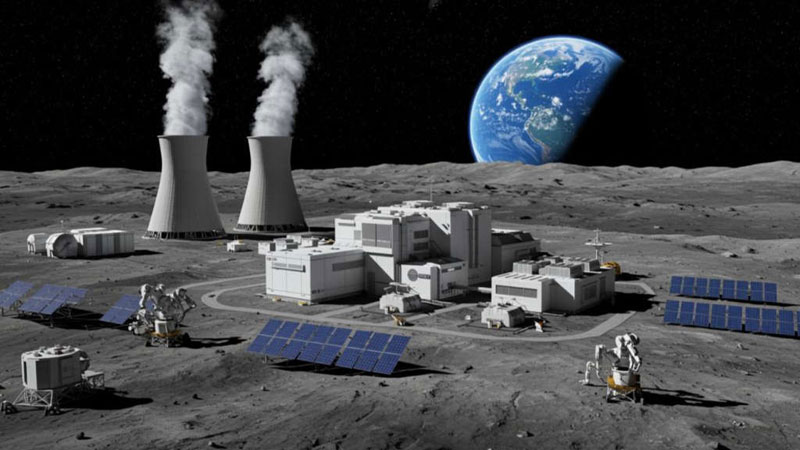NASA's Race to Power Moon and Mars with Nuclear Reactors

U.S. Accelerates Nuclear Power for Lunar and Martian Exploration
The United States is making a significant push to deploy nuclear power reactors on the Moon and Mars, with plans to launch the first system by the end of the decade. This initiative has been highlighted in a new NASA directive, which outlines the agency’s strategy to support long-term human presence on these celestial bodies.
The directive, signed by acting NASA Administrator Sean Duffy—who also serves as the U.S. Transportation Secretary—calls for the appointment of a nuclear power czar to evaluate two commercial proposals within six months. The move is framed as essential to maintaining a competitive edge against a joint Chinese-Russian effort to establish a lunar reactor by the mid-2030s.
According to the memo, China and Russia have announced their collaboration on at least three occasions since March 2024. The directive warns that the first country to place a reactor on the Moon could establish a "keep-out zone," potentially limiting U.S. access to the area if it does not act first.
A Growing Focus on Space Exploration
This shift reflects a broader change in NASA's priorities under President Donald Trump's second term, moving away from scientific research toward more ambitious goals in human space exploration. The directive underscores the importance of securing a foothold on the Moon and Mars before other global powers do.
While the idea of using nuclear energy beyond Earth is not new, NASA has made steady progress over the years. Since 2000, the agency has invested $200 million into developing small, lightweight fission power systems. However, none of these projects have reached flight readiness yet.
In 2023, NASA awarded three $5 million contracts to industry partners to explore generating 40 kilowatts of power—enough to sustain 30 households for ten years. Unlike solar power, which is limited by day-night cycles and weather conditions, fission systems can operate continuously. This makes them ideal for use during the long lunar nights or the frequent dust storms on Mars.
Advancements in Technology
Recent technological advancements have made these systems more compact and efficient. In December 2024, NASA officially committed to using nuclear power on Mars as part of its plan for human exploration. This decision marks one of seven key milestones necessary for sustained human presence on the Red Planet.
Industry feedback indicates that surface power needs should be at least 100 kilowatts to support long-term operations. These operations would include life support systems, communication equipment, and mining tools for extracting surface ice. The plan assumes the use of a "heavy class lander" capable of carrying up to 15 metric tons and targets a readiness date for launch by the first quarter of FY30—late 2029.
Challenges and Delays
Despite these ambitions, NASA’s Artemis program, which aims to return humans to the Moon and establish a lasting presence near the south pole, has faced repeated delays. The timeline for Artemis 3, the first planned crewed landing, has been pushed back to 2027. Many experts doubt this date is realistic, given that the planned lander, SpaceX’s Starship, is still far from operational.
Meanwhile, China has set its sights on a crewed mission to the Moon by 2030. The nation has demonstrated greater consistency in meeting its deadlines in recent years, raising concerns about the pace of U.S. space efforts.
As the race to the Moon and Mars intensifies, the development of reliable and sustainable power sources will be critical. Nuclear technology offers a promising solution, but its implementation requires careful planning, international cooperation, and continued investment. The next few years will be crucial in determining whether the United States can maintain its leadership in space exploration.

Comments
Post a Comment